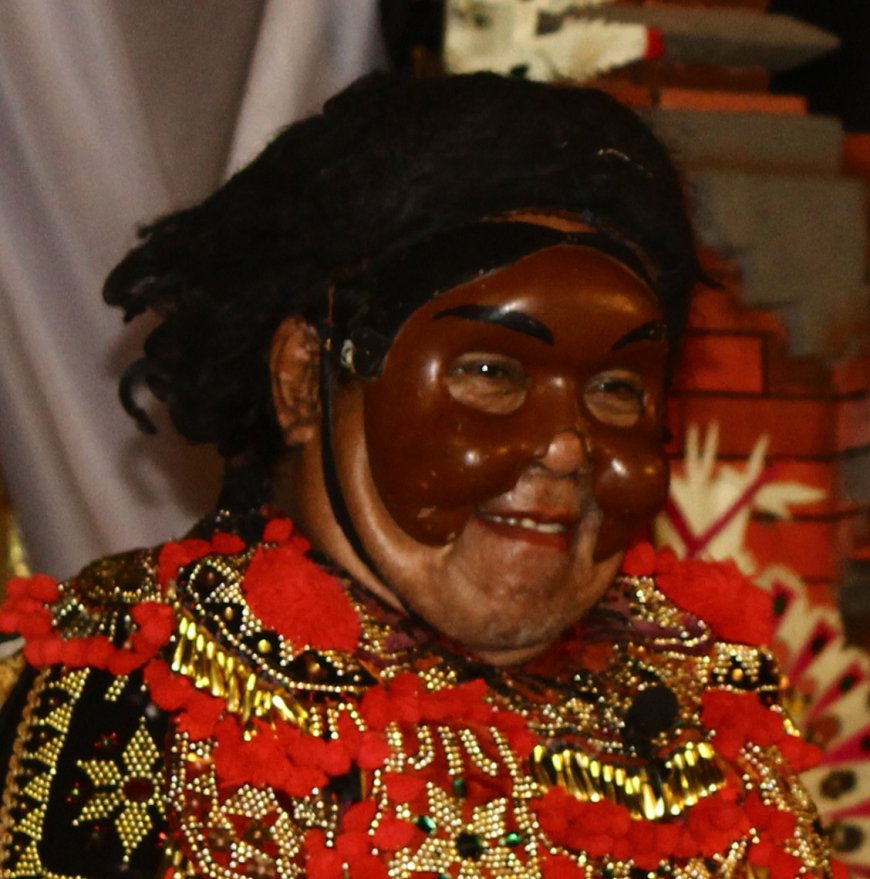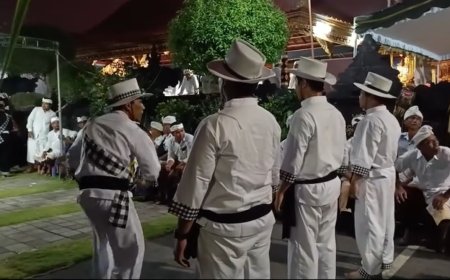Tracing the Footsteps of Topeng Tugek Art as the Icon of Carangsari Village
The beauty of Bali as an island rich in culture and art serves as a magnet for tourists. Bali, renowned for its natural beauty, is not just a destination for nature enthusiasts but also the birthplace of numerous rich arts and cultures. One traditional art form that plays a significant role in representing Bali's cultural identity is mask art.

Balinese art which is closely related to Hindu religious ceremonies is the art of masks. Mask or tapel is a fine art that uses an object on the dancer's face as a substitute for makeup on the face. In Balinese dance, masks are generally made of wood with a shape adapted to the desired character. Of the many masks and types of masks in Bali, one of the arts that uses masks is the art of prembon or Balinese classical dance drama which is a combination of dance, metembang and speaking.
One of the famous prembon mask arts in Bali, specifically in Carangsari Village, Petang District, Badung Regency is the Topeng Tugek. The Topeng Tugek was first performed and popularized by a maestro named I Gusti Ngurah Windia (deceased). Topeng Tugek, the icon of Carangsari Village and often known as the Topeng Carangsari, is a bondres performing art that prioritizes the appearance of funny characters who contain jokes to present fresh humor and always contain educational messages in it.
According to the late I Gusti Ngurah Windia, Tugek was a character that provided a presentation and educational performance for the audience. The character of Tugek offered a presentation and reflection for women. Topeng Tugek was highly favored by the community in the 1970s due to its consistently humorous and cheerful appearance, as well as providing informative content. "Tugek is a character with an unattractive appearance. However, behind its unattractive facade lies beauty, meaning, and benefits that can be delivered to the public and the younger generation to educate, motivate, and impart important messages and knowledge to the audience," said the late artist in an interview in 2021

Topeng Tugek Perfomance by The Maestro (Source: Editorial Collection)
The presence of the Topeng Tugek character in the 1970s brought a new dimension to mask art in Bali, particularly in the depiction of female characters. This is what makes Topeng Tugek a pioneer or precursor of masks featuring female characters, even though portrayed by a male actor. The Tugek character, as one of the first female characters in Balinese mask art, has often served as an inspiration for mask artists in Bali when creating female mask characters, particularly in the world of mask performance.
The concept of the Topeng Tugek Carangsari performance, based on information from the late I Gusti Ngurah Windia and his son, I Gusti Ngurah Artawan, who is also a part of the generation continuing this mask tradition, reveals that Topeng Tugek follows a formula, namely TAT-SAT-SAT-TAT. The concept of TAT SAT (Tatwa and Satua) serves as the hallmark of Topeng Tugek's perfomance. In the Satua (story) presented, Tatwa (philosophy) is embedded, and Tatwa is conveyed through Satua. This is a formula or concept that Topeng Tugek Carangsari steadfastly adheres to in delivering a performance of virtue and is inseparable from Balinese customs. The performance of Topeng Tugek not only entertains the audience but also provides guidance and enlightenment to the community.
In a Topeng Tugek performance, the character is portrayed wearing traditional attire known as "sesaputan petopengan" along with a "tapel tebihan" or half-face mask, and a touch of red lipstick. Additionally, there is accompanying music that plays a crucial role in enhancing the character of Tugek. Originally, Topeng Tugek performances were accompanied by the traditional Balinese musical instrument called Gong Kebyar. However, after the establishment of Sanggar Tugek, the Topeng Tugek Carangsari troupe began using Semar Pegulingan music accompaniment. The use of Semar Pegulingan accompaniment was introduced to create a fresh ambiance while still preserving the traditional essence of Topeng Tugek Carangsari.

Topeng Tugek Perfomance (Source: Editorial Collection)
The fame of the character portrayed in Topeng Tugek, danced by male performers with distinctive movements resembling the gentleness of female gestures, has made Topeng Tugek a frequent feature in various art events, including the Bali Arts Festival. Its beauty and complexity have garnered significant interest from audiences spanning different social strata.
Not only in Bali, but Topeng Tugek has also spread beyond the island to various parts of the world, including Lombok, Jakarta, the United States, Germany, and many other regions. This demonstrates that the allure of Balinese traditional art, particularly Topeng Tugek, possesses a universal appeal that bridges diverse cultures worldwide. To this day, the influence of Topeng Tugek in the performing arts remains remarkably strong. Many performing artists, especially mask dancers, draw inspiration from the character of Tugek and strive to replicate the movements and expressions of this character. This underscores the vital importance of preserving and honoring Bali's traditional arts, ensuring that this cultural heritage continues to flourish and inspire future generations.
Throughout the long journey of Topeng Tugek as an inseparable part of Balinese culture, we can see how this art form has transformed people's perception of traditional art. Topeng Tugek, which was initially appreciated mainly by the local community, has now become a representative of Balinese culture recognized worldwide. This serves as tangible evidence of the critical importance of preserving and conserving traditional arts, such as Topeng Tugek, to ensure their continued growth and sustainability.
However, challenges persist. The changing times and modernization can pose a threat to the preservation of traditional arts. Therefore, we all have a responsibility to continue supporting and promoting traditional arts like Topeng Tugek. This is not only about preserving Balinese culture but also about safeguarding the rich and valuable cultural roots. As the icon of Carangsari Village, Topeng Tugek teaches us that within the beauty of art lies a profound message. May this art continue to thrive and inspire us all to preserve, respect, and cherish Bali's invaluable cultural heritage, passing it on to future generations. In doing so, Bali's cultural heritage will remain alive, flourishing, and illuminating the world.






























































